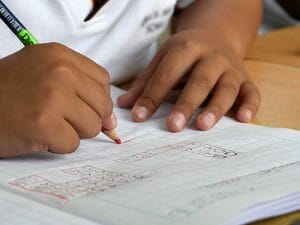
Articles
Industry News
The Untapped Potential of Open-Source for Education
By Hillary Miller
October 05, 2017
Some say there’s no such thing as a free lunch. The open-source movement begs to differ. The prevalence of eLearning has made it easier than ever to create and share open-source resources. Whether it’s lesson plans, a software program, or a collection of media content, teachers might not need to pay for the resources that can help bridge the education gap around the world.
What Does Open-Source Really Mean?
Although the term “open-source” appears often, it’s not always used to mean the same thing.
Open-source typically indicates that the content is being shared under a Creative Commons license. There are two important factors for something to qualify as open-source: It doesn’t have a single designated creator, and it’s free to share and distribute.
Probably the best known example of this kind of material is Wikipedia. In this example, the two key components of open-source are readily apparent. Anyone can access all of Wikipedia for free, and at the same time, anyone can contribute to it.
To be effective, the content needs an efficient way for creators to communicate, and a channel to move through. Essentially, this means that open resources could not have existed 30 years ago at nearly the scale that it does today. The worldwide web is now the perfect method of connecting a vast network of teachers and educators. With the increasing integration of eLearning into education, there’s a ready-made opportunity to utilize these resources in every classroom.
How Open-Source Can Address the Education Gap
 There is a vast range of open-source resources specifically geared toward educators and trainers. Teachers who don’t take advantage of these tools risk reinventing the wheel, so to speak; they may spend precious time and resources re-doing work that other teachers have already done.
There is a vast range of open-source resources specifically geared toward educators and trainers. Teachers who don’t take advantage of these tools risk reinventing the wheel, so to speak; they may spend precious time and resources re-doing work that other teachers have already done.
“The move to open education practice (OEP) is more than a shift in content, it is an immersive experience in collaborative teaching and learning,” explains the website for OER Commons, one of the leading places to find open-source educational content. “OEP leverages open education resources (OER) to expand the role of educators, allowing teachers to become curators, curriculum designers, and content creators. In sharing teaching tools and strategies, educators network their strengths and improve the quality of education for their students.”
Open resources are especially powerful in education for a number of reasons. For one, the underfunded condition of many schools means that free resources are the only kind of resources that teachers can access. Because of the huge disparity in educational opportunity in America, and even more pronounced disparity throughout the world, many teachers have to rely on outdated or impractical teaching materials simply because no others are available.
Undertrained teachers and poorly designed teaching material are both significant factors in the educational achievement gap. Resources that are free and, importantly, easily modifiable provide a way to address this disparity for students around the world.
How Open-Source Changes Education for Students
 Besides providing desperately needed training and support to teachers, open educational resources can also have a powerful impact directly on students. Open-source software is an excellent example.
Besides providing desperately needed training and support to teachers, open educational resources can also have a powerful impact directly on students. Open-source software is an excellent example.
Many software programs exist on two distinct levels. One is the interface that users encounter, and the other is the back-end design that makes the software work. For most commercial software, users will only ever see the interface.
However, open-source programs are different. They encourage anyone to look under the hood, tinker around, pull things apart and put them back together again. For students interested in technology, this software provides an opportunity to learn on a deeply practical level.
In recent years, a number of citizen science initiatives have allowed students to directly participate in open-source science projects, from crowdsourcing cultural heritage reconstruction to exploring the oceans. This encourages students not just to complete projects within the context of their classrooms, but also to engage with a worldwide community of other students and scientists. The feeling of contributing to a community encourages a global perspective. In short, incorporating open-source projects into the classroom can give students a chance to see the real-world impact of their work.
For more information about open-source educational resources, including a directory of such resources, visit OpenSource.com.









[…] of these privacy concerns, chatbots are beginning to infiltrate every corner of higher ed, enhancing communication with students on all aspects of college life and creating a virtual […]
[…] a bureaucratic challenge on a scale that many have yet to encounter. That is a problem that chatbot developers like AdmitHub seek to address. On February 16, the Boston-based company raised a Series B funding […]